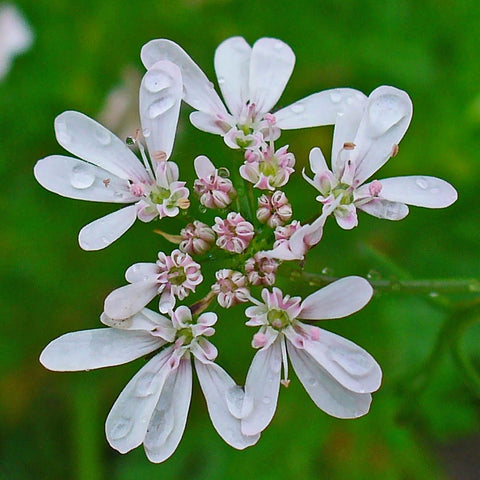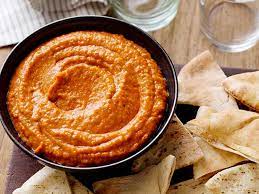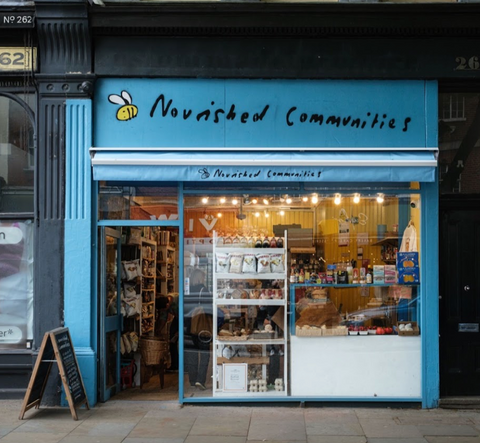Coriander has the rare position of being both a herb and a spice, its dried seeds and roots are used as a spice and its leaves are herbs. About 500 ml of coriander seeds were recovered from the tomb of Tutankhamen and, because this plant does not grow wild in Egypt, this is considered to be proof that coriander was cultivated by the ancient Egyptians. Coriander is mentioned in the bible: Exodus, chapter 16, verse 31, reads: “And the house of Israel called the name thereof Manna: and it was like coriander seed, white; and the taste of it was like wafers made with honey.”.
Coriander is an antiseptic, it promotes the functioning of the digestive and nervous systems and has anti-inflammatory properties, it can also help regulate elevated blood sugar levels in people who suffer from diabetes. Coriander is thus used to reduce high cholesterol levels, mouth ulcers, anaemia, skin inflammation and to treat haemorrhoids, painful joints, and menstrual pains and irregular periods. Coriander leaves are rich in vitamins A, C and K, with moderate content of minerals, the seeds generally have lower content of vitamins but provide dietary fibre, calcium, selenium, iron, magnesium and manganese. Although coriander leaves don’t last long out of the fridge, when put in sauces their high antioxidant properties can delay or prevent food from spoiling. Animal studies demonstrate that coriander extract is nearly as effective as Diazepam (valium) in reducing symptoms of anxiety.
Most people perceive the taste of coriander leaves as a tart, citrusy taste, but a smaller group, about 4–20% of people, think the leaves taste like soap; this has been linked to an olfactory-receptor gene which is highly sensitive to aldehyde chemicals also present in soap. However the effect is not entirely determined by genetic factors as only 80% of genetically identical twins share the same view on the herb. According to a 2012 paper in the journal Flavour, 21% of east Asians, 17% of people of European ancestry and 14% of people of African descent say they dislike coriander, while only 3–7% of south Asians, Latin Americans and Middle Eastern participants disliked the herb, suggesting that the exposure to the herb in their diet help improve the experience. Food scientist Harold McGee suggests that those who dislike it should try it very well chopped or ground to help your enzymes break down the aldehyde molecule faster.

Flowers of coriander plant.
Image by H. Zell - Own work, CC BY-SA 3.0, https://commons.wikimedia.org/w/index.php?curid=9611212







Comments (0)
There are no comments for this article. Be the first one to leave a message!